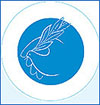 |
|
 |
 |
|
|
A Brave New World
Meenakshi Doctor

|
Is
this where science fiction meets everyday life? Is that most sacred bond - that
between a mother and her newborn child - being invaded by the new technology of
genetic engineering? Or is stem cell storage going to be like a routine blood
test in the near future?
In
what seems like an incredible leap in medical and genetic research, India is
advancing towards the infinite possibilities offered by stem cells grown from
Umbilical Cord Blood (UCB). And a new kind of choice faces mothers-to-be as they
decide what is best for their infant...
What
is Umbilical Cord Blood?
Blood
contained in the umbilical cord is UCB. It is collected at the time of delivery
of a baby. The reason it is of medical interest is because 16 years ago,
researchers found that UCB contains a very rich source of 'stem cells'.
How
is UCB collected?
Usually,
after a baby is delivered, the umbilical cord is clamped in two places and while
the baby is removed for cleaning after being cut away from the umbilical cord,
the placenta and the remaining umbilical cord are waiting to be expelled by the
mother. It is at this stage that we insert a needle into the umbilical vein and
collect the foetal blood via gravity into the blood collection bag. After a
while, the vein naturally collapses. We are not taking anything extra either
from the baby or from the mother. The process is not painful and the mother is
not even aware of the procedure most of the time, since she is recovering from
the larger process of delivering her baby.
|
Do
you need to store stem cells?
There
are essentially two ways of evaluating one's need for this type of bio
insurance. For those who do not have a history of genetic problems in the
family, there is a slim chance of using or needing this technology. The chances
of requiring stem cells for a medical condition vary from one in 200 to as high
as one in 20,000! But again, even as recently as five years ago, there was very
little information available on the exact applications and diverse uses of stem
cell research. There was no question of using stem cells in the treatment of
stroke, diabetes, Alzheimer's, Parkinson's Disease and so forth. Very little was
known of the diverse applications for stem cell growth. Today, anyone is
susceptible to ailments like diabetes and Parkinson's and if you are going to
bank the cells at the time of a baby's birth, one hopes, they will not have to
be used. But having said that, if you do need it, then this is the best possible
option to have, if you want access to a compatible genetic stem cell
source.
Real
life success
An
oncologist in Chennai tells us about a family in which the older child had
a medical condition called Thalassemia Major. The child needed routine blood
transfusions on an average of one every six months. The parents, while having
the second child, banked the UCB. This younger sibling had the condition
Thalassemia Minor, which does not manifest itself. While banking the UCB of the
younger child, a transfer of stem cells was made possible for the older child.
As a result, the elder child's condition was reversed from Thalassemia Major to
Thalassemia Minor, making the elder sibling no longer dependent on blood
transfusions.
|
|
 |
|
|
|
| Don't wait for evolution. Get |
 |
with
|
 |
 COMMENTS ON THIS ARTICLE COMMENTS ON THIS ARTICLE |
 |
 No comment has been posted for this article yet. No comment has been posted for this article yet.
|
|
|
|
|
 |
|
|
|
Ponds Femina
Miss India 2005
|
|
Indiatimes
Women
|
 Mahavir-Mahatma
Awards
Oneness
Forum launched How to
join |
|
|
|
Indiatimes
Modelwatch  a aClick to view
more  |
|
|



